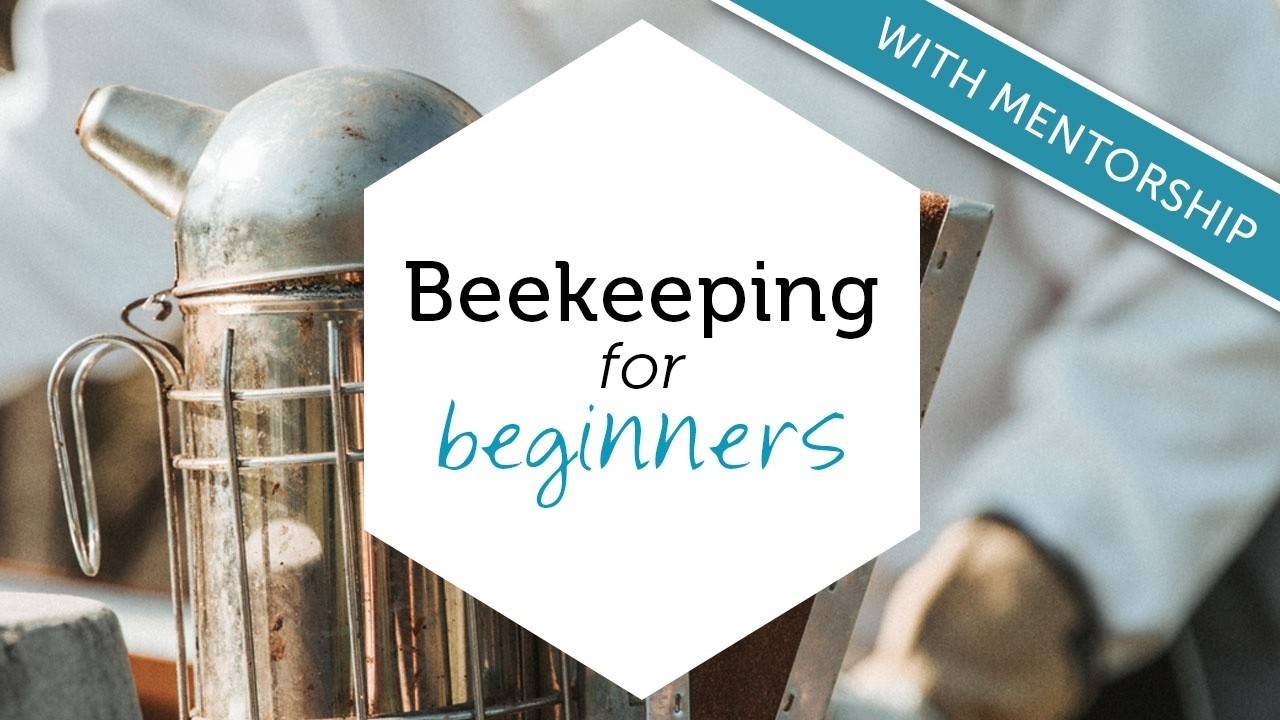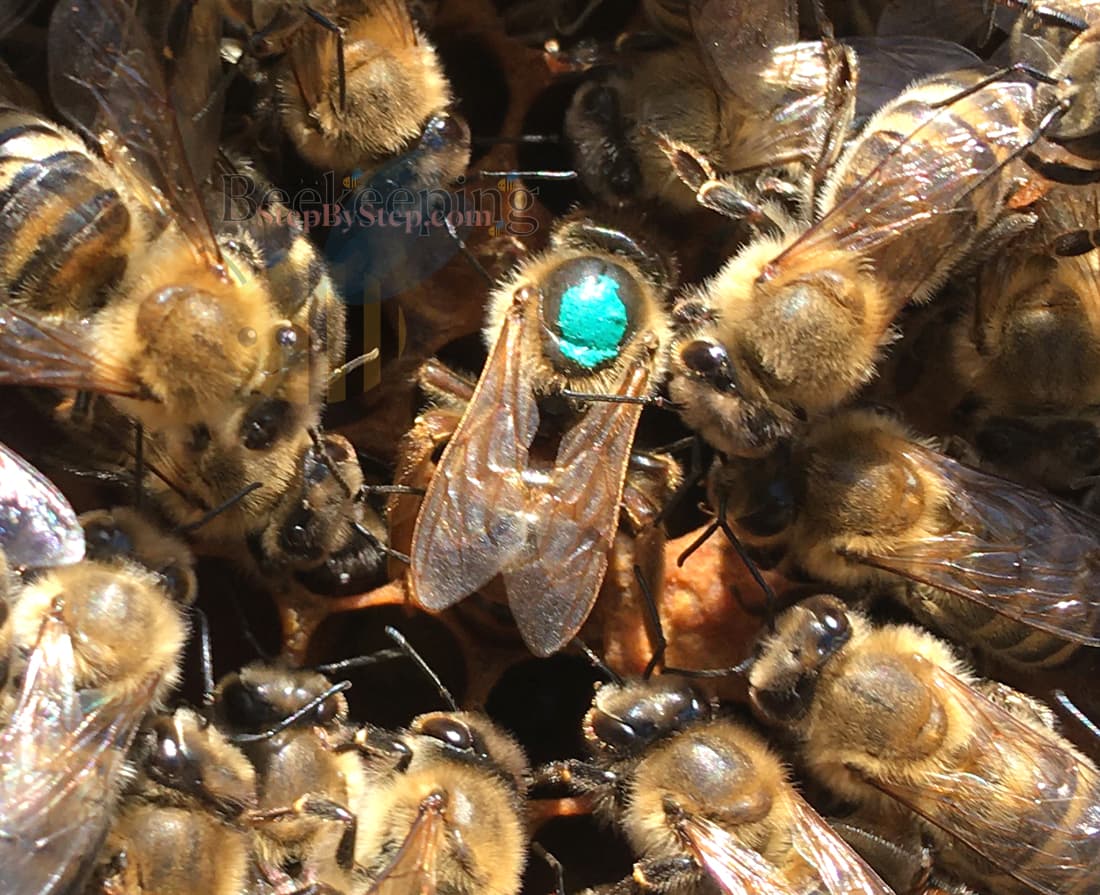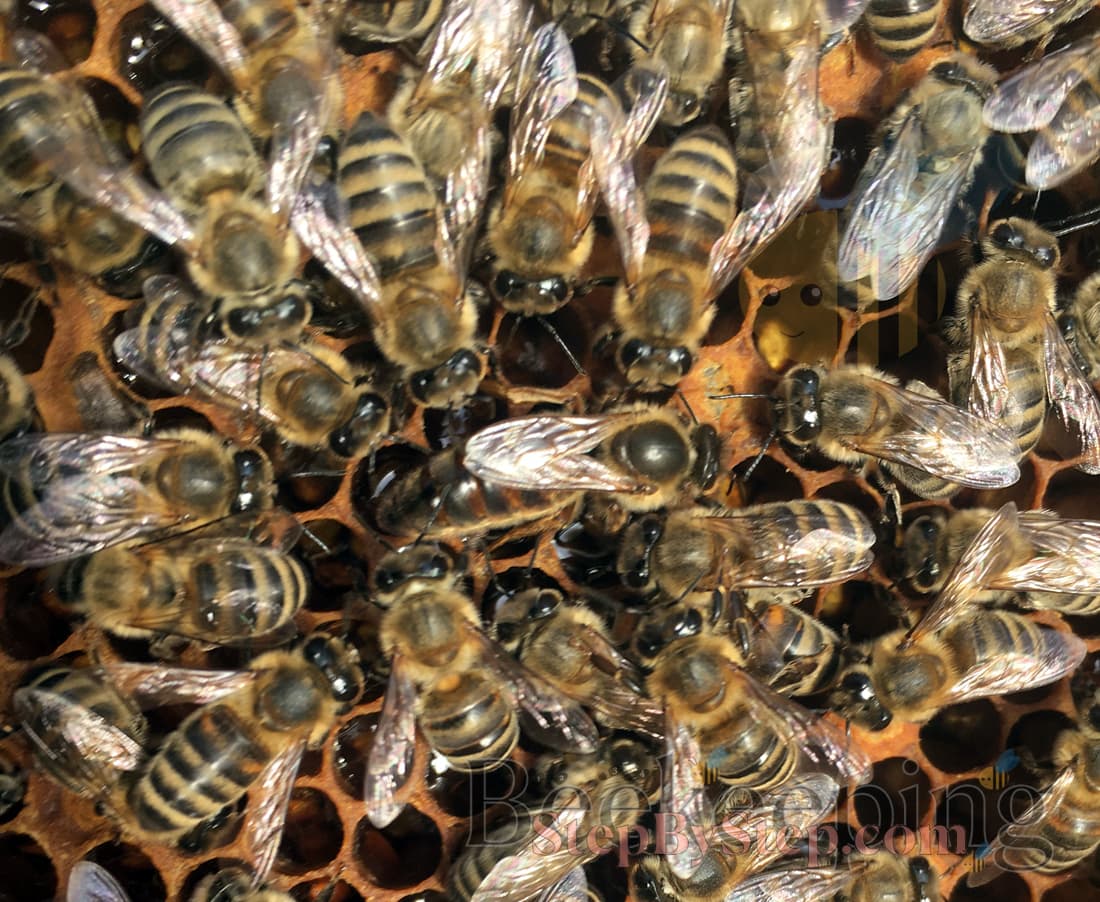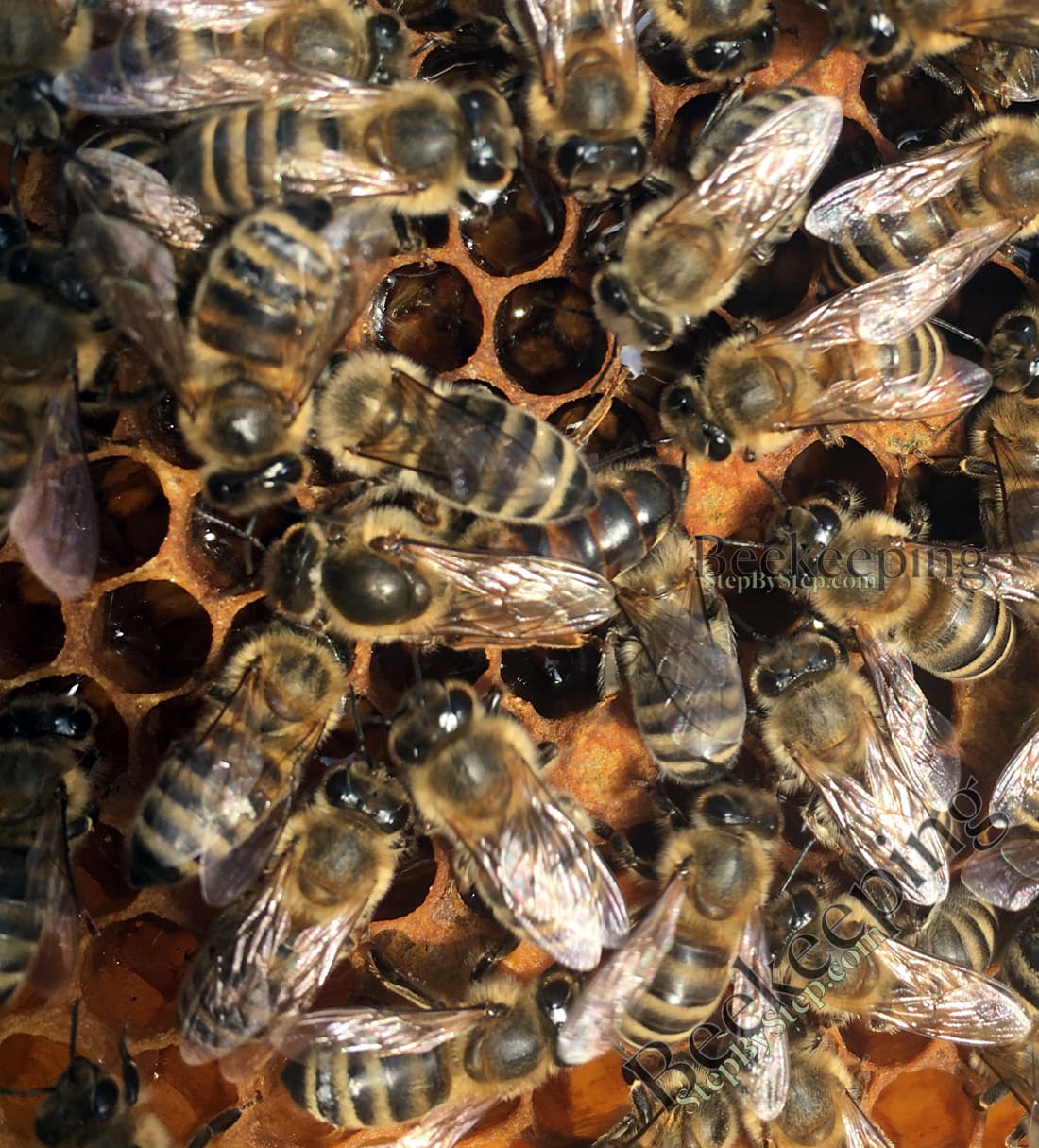Every honey bee colony has a queen. Colony that for any reason doesn't have a queen, needs to make a new one or it will perish.

One colony has one queen.
Occasionally, two queens can live and lay eggs in the same beehive. This happens when the bees themselves decide to replace the old queen and make a new one. As a result, mother and daughter lay eggs together until the old queen disappears.
Advertisement :

Beekeeping for Beginners
Everything you need to know!
This is a full beekeeping course for beginners.
The queen's job is to lay eggs and to keep the colony together with her scents – pheromones. Worker bees do everything else – they feed her, clean her and take care of all her needs.

The quality of the queen, or rather her genetics and productivity in laying eggs are vital to the colony's strength and its productivity in making honey, wax, pollen and other bee products but also its tendency towards swarming, calmness etc.
Egg laying

Queen bee is the only female in the hive that can mate and lay fertilized eggs. The queen lays both fertilized and unfertilized eggs.
She can lay up to 2000 eggs in a day but she doesn’t lay the same amount throughout the year.
Occasionally, healthy queen can reduce or even completely stop laying eggs. This, for example, can happen just before the winter or if there isn't much food in the hive.
That’s one of the reasons why it is better to start with 2 or 3 colonies so you can observe whether the queen is falling behind with laying and react on time.
The queen lays the most during the honey flow.
In autumn she gradually reduces laying until she completely stops in winter.
She begins laying again at the end of the winter. In the beginning not so much, but as it gets warmer she gets busier and busier.
In some regions the queen can lay during the whole year thanks to the warm climate.
Egg laying depends on the temperature, weather, honey flow but also the genetics, quality and age of the queen.
Although the queen can live 5 years or sometimes up to 7 years, the queen's fertility is at its peak in her first and in the beginning of her second year. This is why many beekeepers change queens every or every other year.
A good and healthy queen lays eggs in comb cells neatly in concentric circles without leaving many empty cells.
The bigger part of the brood should be a worker brood. A little and scattered brood or mostly drone brood indicates that something is wrong with the queen.
Queen's pheromones
On the surface of her body, the queen produces pheromones. Those are substances that influence the work of the colony, such as gathering the nectar, pollen, propolis, comb making and many other bee's duties.

Bees often lick the queen and pass the pheromones across the whole hive.
They recognize their queen by her smell and they won't let another queen enter their hive. If that happens, unknown queen will be killed.
When do the bees make a new queen?

The bees make a queen:
![]() During the supersedure (when they want to replace the old queen),
During the supersedure (when they want to replace the old queen),
![]() When they want to swarm, or
When they want to swarm, or
![]() If for some reason they lost their queen.
If for some reason they lost their queen.
The supersedure
Sometimes bees that already have a queen decide to make a new one. This happens when something is wrong with the current queen - she is injured, old, exhausted, lays less than she should... This is called the supersedure.
The supersedure ocures when the colony decides to replace the old queen with a new one if they are not satisfied with her.
Beekeepers, usually, don't wait for the bees to replace the queen but rather they themselves replace her with a new young queen.
Swarming
Swarming is reproduction of honey bee colonies. That’s how new colonies are made in nature. And in that process, bees need to make a new queen.
During the swarming the old queen leaves the hive with a number of bees and forms a new colony which settles down in a new place. The young queen remains in the hive and continues the old queen's work.
More details on swarming - Swarming.
If colony lost its queen
Sometimes the queen gets killed or the beekeeper removes her on purpose.
When that happens, bees immediately notice that the queen is missing and tend to make a new one.
If there is a young brood in the hive, the bees will choose a number of larvae and feed them abundantly with royal jelly and make new queens out of them.
When the first queen emerges, the other queen cells will be destroyed or there will be a fight between young queens.
If there is no young brood (eggs and/or up to 3 days old larvae) the bees can't make a new queen and, unless the beekeeper helps, the colony will fail to exist.